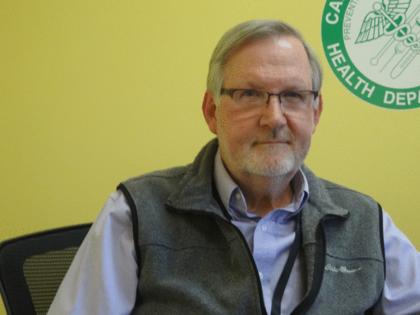West Virginia city once battered by opioid overdoses confronts 'fourth wave'
Published in Health & Fitness
HUNTINGTON, W.Va. — From 2006 through 2014, more than 81 million painkiller pills were shipped to this city and surrounding rural Cabell County.
The arrival of prescription opioids onto seemingly every block of Huntington, a city of about 46,000 people, augured the first wave of an overdose crisis. Heroin followed, then fentanyl.
Residents remember Aug. 15, 2016, as the darkest day because on that afternoon and evening, 28 people overdosed in the city. But Huntington had shouldered collective trauma before.
On Nov. 14, 1970, Southern Airways Flight 932 crashed into a hillside just outside Huntington, killing all 75 on board. The dead included football players, coaches, and boosters from Marshall University, located here.
Residents say the tragedy bonded the community in a way that helped prepare it for crises to come. But now that cohesion is being challenged in a city and county once known as the epicenter of the nation’s opioid epidemic.
This crisis continues to evolve. Cabell County, like other communities, is in the depths of a “fourth wave” of overdoses fueled by mixtures of drugs that often include fentanyl and other powerful synthetic opioids.
Fentanyl is now ubiquitous — heroin is rarely seen anymore — and toxicology results reveal other synthetics, including carfentanil, a drug used to anesthetize elephants that can be 100 times as potent as fentanyl. Also in the mix is xylazine, or “tranq,” another animal tranquilizer that can cause horrific skin ulcers in IV drug users. Increasingly, those drugs are being mixed with stimulants like methamphetamine and cocaine.
Michael Kilkenny, chief executive of the Cabell-Huntington Health Department, recalls coming to the “shocking realization” in 2015 that drug overdose was the third-leading cause of death in the county, after heart disease and cancer.
When the Centers for Disease Control and Prevention tightened guidelines for prescribing opioids in 2016, users turned to heroin. Then came fentanyl. In 2017, Cabell County had the highest rate of opioid-related overdose deaths in the state with the highest rate in the country — five times the national average.
Connie Priddy, an emergency medical services nurse, said that after the dark day of Aug. 15, there was initially a sense of relief. “We saved all 28 people,” she said. “Our EMS crews did a wonderful job.”
...continued
©2024 KFF Health News. Distributed by Tribune Content Agency, LLC.
















Comments